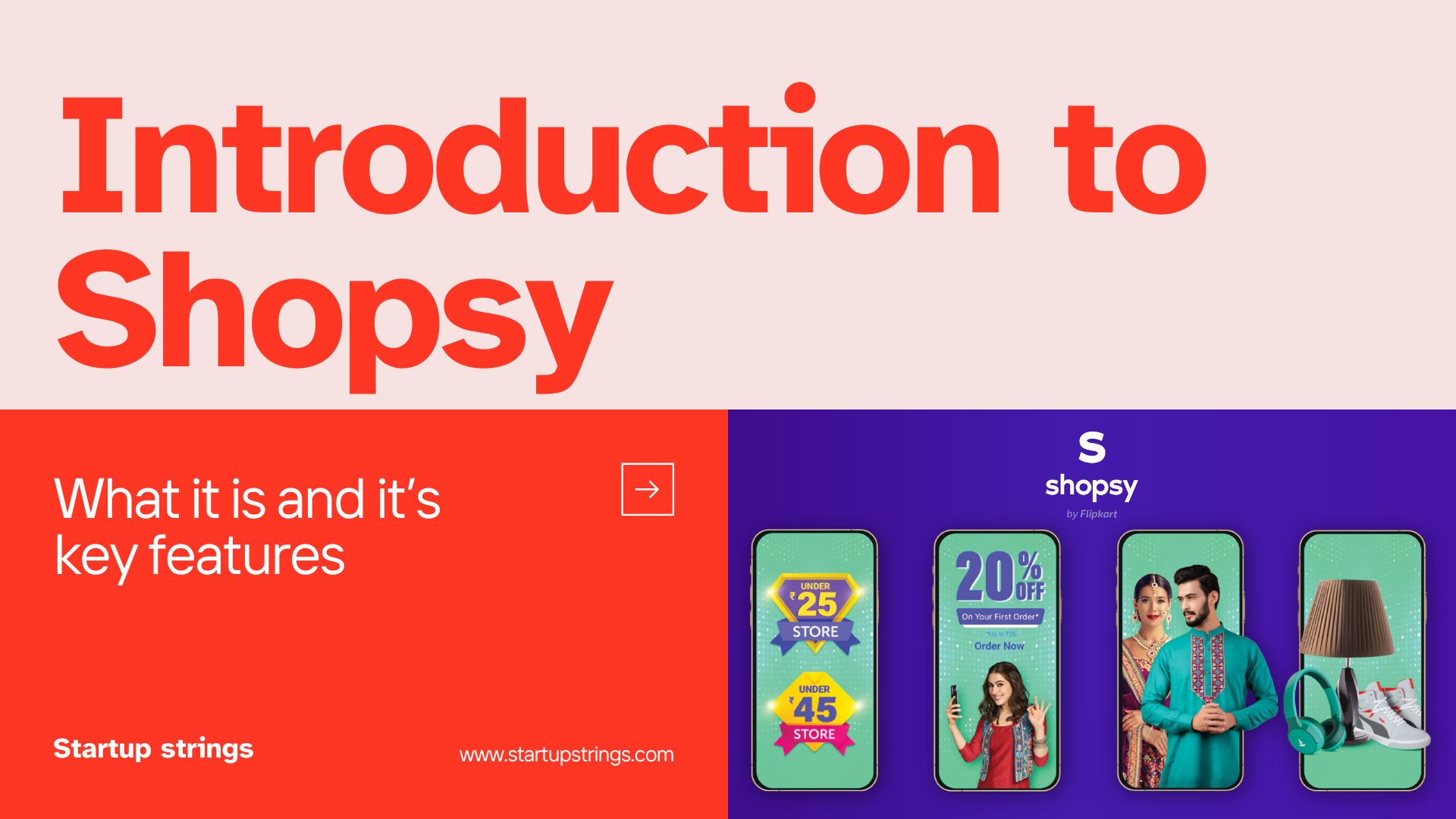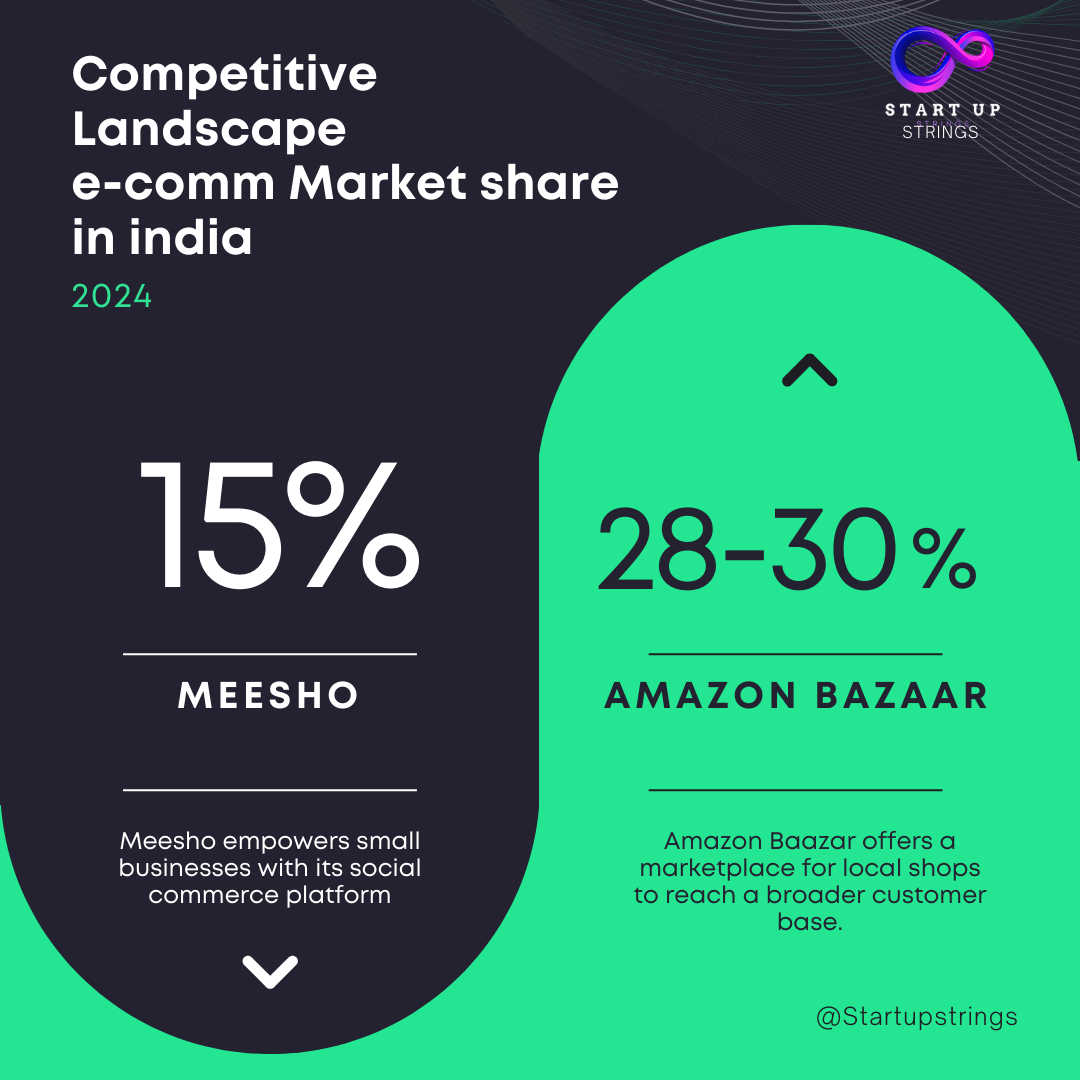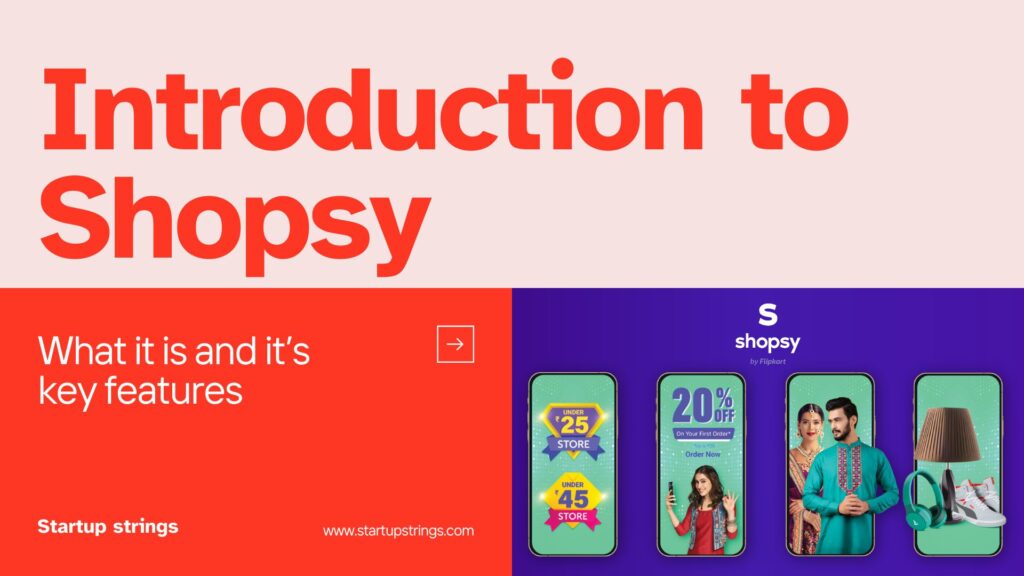
Introduction to Shopsy
In the dynamic world of e-commerce, Shopsy, a platform launched by Flipkart in July 2021, has quickly gained traction. Designed initially as a social commerce platform, Shopsy has evolved to become a direct-purchase e-commerce site, catering primarily to price-sensitive consumers in Tier II and Tier III cities across India. This comprehensive guide will delve into Shopsy’s business model, economic impact, latest trends, and case studies to provide a thorough understanding of this innovative platform.
What is Shopsy?
Shopsy is an online shopping portal owned by Flipkart that provides a large selection of goods at affordable costs. Initially designed for social commerce, where users could share product catalogs via social media to earn commissions, Shopsy has pivoted to a direct purchase model to streamline the shopping experience.
Key Features of Shopsy
- Wide Product Range: From fashion and electronics to home essentials and groceries, Shopsy offers a vast array of products.
- Affordable Pricing: Known for its competitive prices, Shopsy frequently features discounts and deals, making it an attractive option for budget-conscious shoppers.
- Targeted Accessibility: Shopsy primarily caters to consumers in Tier II and Tier III cities, ensuring high-quality products are accessible to a broader audience.
Shopsy’s Business Model

Shopsy operates on a zero-commission marketplace model, allowing sellers to list their products without paying a fee. This model significantly lowers the barrier to entry for small businesses and individual sellers, fostering an inclusive and diverse marketplace.
Economic Terms and Strategies
- Zero-Commission Model: Unlike traditional e-commerce platforms that charge sellers a commission, Shopsy allows sellers to list products for free, thereby encouraging more small businesses to join the platform.
- Hyper Value Commerce: Shopsy focuses on providing maximum value for money, appealing to consumers who are highly price-sensitive.
Latest Trends and Expansions
- Foray into Kids’ Segment: Shopsy recently expanded its product offerings to include apparel, toys, and stationery for children aged 0-12 years. This move aims to tap into the growing demand for children’s products in Tier II and III cities.
- Seasonal Collections: Regularly updated seasonal collections, such as the summer collection for kids, keep the product offerings fresh and relevant.
Shopsy’s Impact on E-commerce
Shopsy has significantly influenced the e-commerce market in India, especially in smaller cities and rural areas. By focusing on affordability and variety, Shopsy has attracted many first-time online shoppers, expanding its user base and market reach.
Case Studies
a) Grand Shopsy Mela
During the six-day Grand Shopsy Mela, the platform experienced a 2X surge in daily demand and a significant increase in new customers, particularly from Tier II and III cities. This event featured over 16 crore products with free delivery, highlighting Shopsy’s capability to manage large-scale promotions and attract a diverse customer base.
Key Insights:
-
- Daily Demand Surge: 2X increase during the event.
- New Customer Acquisition: Significant increase from Tier II and III cities.
- Top Selling Products: Choppers, kids’ clothing, earbuds, and fashion wearables.
b) Tier II and III Market Penetration
Cities like Cuttack, Varanasi, Guwahati, and Muzaffarpur have shown strong demand for Shopsy’s products, particularly in the kids’ segment. This indicates successful penetration into less urbanized areas, expanding Shopsy’s reach and customer base.
Key Insights:
-
- High Demand in Smaller Cities: Strong sales in Tier II and III cities.
- Popular Categories: Kids’ products, fashion wear, and kitchen essentials.
Competitive Landscape

Shopsy faces competition from other low-cost e-commerce platforms like Meesho and Amazon Bazaar. However, Shopsy’s unique zero-commission model and focus on hyper-value commerce give it a competitive edge.
Competitor Comparison
1) Meesho
Like Shopsy, Meesho started as a social commerce platform. However, Shopsy’s pivot to direct sales and its zero-commission model differentiate it by reducing costs for sellers, which can be passed on to consumers as lower prices.
2) Amazon Bazaar
Amazon’s budget-focused marketplace offers a wide range of products but often includes higher seller fees compared to Shopsy, making Shopsy a more attractive option for price-sensitive shoppers.
Future Prospects
Shopsy is poised for continued growth, with plans to expand its product range and improve the user experience further. The platform’s focus on affordability, variety, and accessibility positions it well for future success.
Planned Expansions
- Increased Product Offerings: Expanding the selection in the kids’ segment and other high-demand categories.
- Enhanced User Experience: Continuous improvements to the user interface and shopping experience to attract and retain users.
Conclusion
Shopsy by Flipkart has established itself as a key player in the Indian e-commerce landscape by focusing on affordability, variety, and accessibility. Its innovative business model,marketing and strategic expansions have positioned it for continued growth and success. Whether you are a seller looking to reach a broader audience without incurring high costs or a shopper seeking great deals, Shopsy offers a compelling platform for both.
Summary Table: Shopsy’s Key Features and Trends
| Feature/Trend | Description | Impact |
|---|---|---|
| Zero-Commission Model | Sellers list products without fees. | Low barrier to entry for sellers |
| Kids’ Segment | Apparel, toys, and stationery for ages 0-12. | High demand in Tier II/III cities |
| Grand Shopsy Mela | Major sale event with 2X surge in demand. | Increased user engagement |
| Seasonal Collections | Regularly updated product offerings, e.g., summer collection for kids. | Fresh shopping experience |
| Market Penetration | Strong presence in smaller cities like Cuttack and Guwahati. | Expanding customer base |
Detailed Analysis of Shopsy’s Strategy
1. Expanding into the Kids’ Segment
Shopsy’s recent foray into the kids’ segment is a strategic move to tap into the growing demand for children’s products in India. By offering a wide range of kids’ apparel, toys, and stationery, Shopsy is positioning itself as a one-stop shop for parents.
Key Offerings in the Kids’ Segment
- Learning Toys: Educational toys that promote cognitive development.
- Kids’ Apparel: A variety of clothing options, including ethnic wear and combo sets.
- Stationery: Essential school supplies for children.
2. Seasonal Collections
Regularly updated seasonal collections keep Shopsy’s product offerings fresh and relevant. For example, the summer collection for kids includes light, breathable fabrics and playful designs, catering to the needs of children during the hot months.
Impact of Seasonal Collections
- Increased Customer Engagement: New collections attract repeat customers.
- Enhanced Brand Loyalty: Regular updates keep the brand top-of-mind for shoppers.
3. Grand Shopsy Mela
The Grand Shopsy Mela is a testament to Shopsy’s ability to manage large-scale promotional events. The six-day sale saw a significant increase in demand and new customer acquisition, demonstrating the platform’s reach and appeal.
Event Highlights
- Demand Surge: A two-fold daily surge in demand.
- New Customers: Significant growth in new users from Tier II and III cities.
- Top Products: High sales in categories like kitchen essentials and fashion wear.
4. Penetration into Tier II and III Markets
Shopsy’s focus on smaller cities and rural areas has been a key driver of its success. By offering affordable products and ensuring accessibility, Shopsy has become a preferred shopping destination in these regions.
Key Markets
- Cuttack
- Varanasi
- Guwahati
- Muzaffarpur
5. Competitive Edge
Shopsy’s zero-commission model and hyper-value commerce strategy set it apart from competitors like Meesho and Amazon Bazaar. By reducing costs for sellers, Shopsy allows them to offer lower prices to consumers, enhancing its attractiveness as a value-driven platform.
Comparison with Competitors
| Feature | Shopsy | Meesho | Amazon Bazaar |
|---|---|---|---|
| Commission Fees | None | Varies | Varies |
| Primary Market | Tier II and III cities | Urban and rural areas | Urban and rural areas |
| Unique Selling Point | Zero-commission, low prices | Social commerce model | Extensive product range |
Conclusion
Shopsy has made a significant impact on the Indian e-commerce landscape by focusing on affordability, variety, and accessibility. Its innovative zero-commission model, strategic expansions, and focus on underserved markets have positioned it well for continued growth and success. By offering a platform that benefits both sellers and consumers, Shopsy is set to become a dominant force in the value commerce sector.
Whether you are a small business looking to expand your reach without incurring high costs or a consumer seeking the best deals on a wide range of products, Shopsy offers a unique and compelling platform that caters to your needs.


Thanks I have just been looking for information about this subject for a long time and yours is the best Ive discovered till now However what in regards to the bottom line Are you certain in regards to the supply